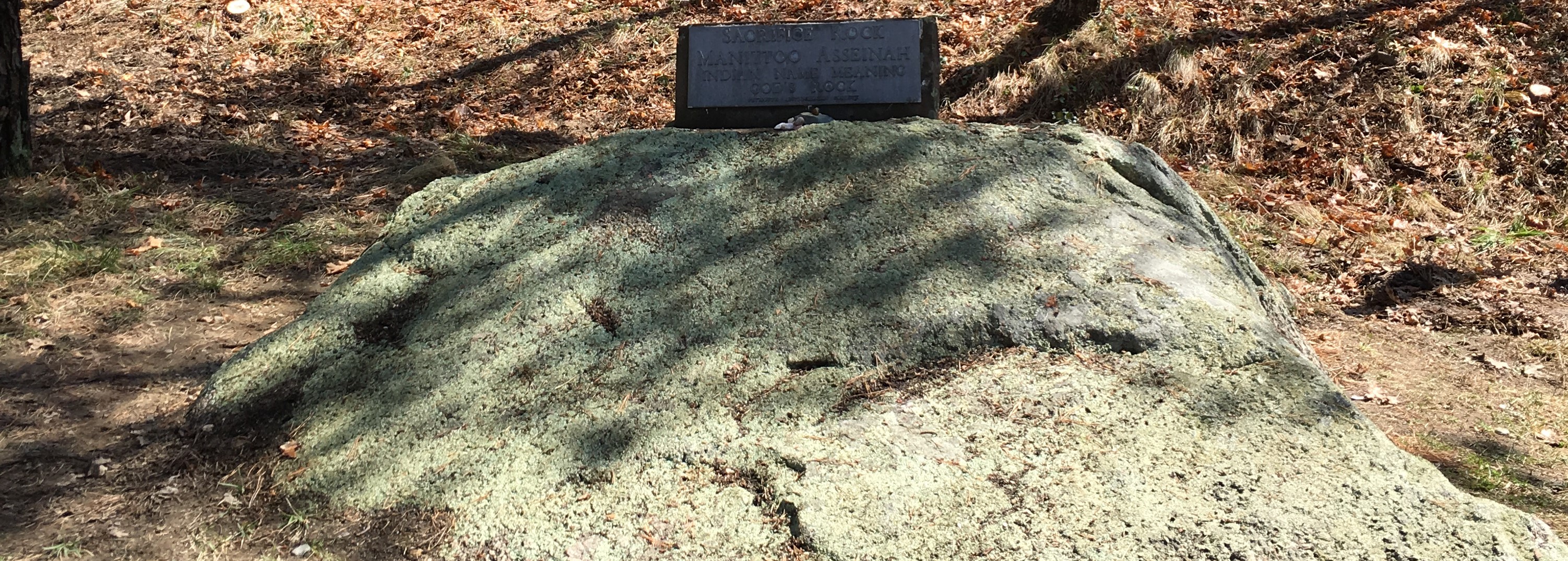Everyone knows Plymouth Rock, but how many have visited Plymouth’s other historic rock? Sacrifice Rock on Old Sandwich Road is the Antiquarian Society’s oldest and perhaps least known historic site. Centuries before the arrival of English settlers to the area, this ancient landmark was an important stop for Wampanoag wayfarers. Travelers left small branches or stones atop the rock, perhaps to receive the blessing of safe passage – the full meaning of the custom is shrouded by time.
Generations of Wampanoag and other native people en route between Plymouth and points south and west placed their offerings on Sacrifice Rock and over time created a great stick formation. Plymoutheans in the 19th century were familiar with the ancient accumulation, although it was later destroyed by fire. Local historian William T. Davis discussed Sacrifice Rock and other examples of this type of ritual site in Ancient Landmarks of Plymouth (1887):
These rocks, still covered with small branches, etc., remain as monuments of aboriginal religious rites. Like the Manittoo Asseinah or Spirit Rocks of the Western Indians, they have always received homage of branches from the natives, who passed them reverently as the abodes of the Great Spirit, as they went on in silence.
In 1928 Sacrifice Rock was given to the Antiquarian Society by Abbott A. Raymond.
It is now possible for today’s travelers to stop at Sacrifice Rock thanks to a pocket park created by The Pinehills, an extensive residential development that abuts the site. This improvement puts Plymouth’s other Rock back on the map, and helps to highlight an ancient part of the region’s diverse history.


